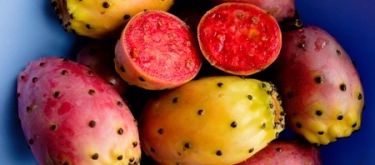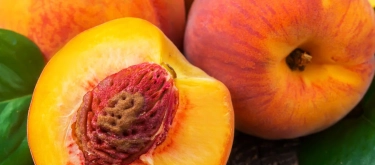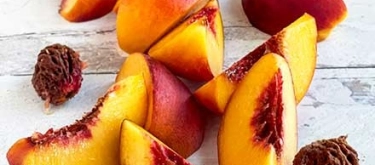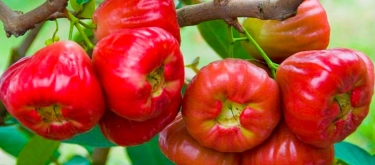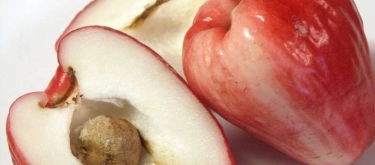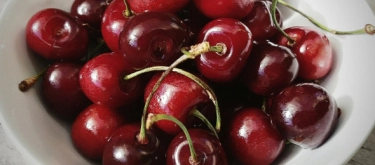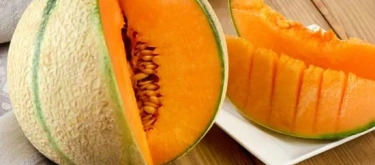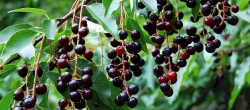Pear: Taste Profile, Aroma, Benefits and Health Risks
The pear (Pyrus communis) is an elegant, sweet fruit cherished worldwide for its delicate flavor, juicy texture, and versatility. Originating from Eurasia, pears have been cultivated for thousands of years, now grown widely across Europe, Asia, North America, and Australia. Renowned for their refined sweetness, aromatic complexity, and nutritional benefits, pears are consumed fresh or used extensively in desserts, salads, and savory dishes alike.
Pears are suitable for vegetarians, vegans, and gluten-free diets. They rarely cause allergic reactions, though some individuals with pollen-related allergies (such as birch pollen allergy) may experience mild oral symptoms after consuming raw pears (Oral Allergy Syndrome).
What does Pear taste like?
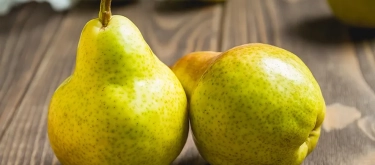
Complete Sensory Description
Taste
Pears exhibit a delicate, sophisticated sweetness complemented by subtle floral and fruity notes. Their sweetness, predominantly mild and balanced, is accompanied by gentle acidity and faint honey-like undertones. Certain varieties, like Bartlett or Comice, offer intense sweetness with aromatic depth, whereas others, like Bosc, introduce richer, earthier nuances. Subtle flavor elements, including hints of vanilla, almond, or spice, may emerge in ripe pears, providing pleasing complexity.
Aroma
Pears possess a subtle, fragrant aroma that blends floral, fruity, and sometimes spicy elements. Bartlett and Comice pears are notably aromatic, featuring floral and honey-like scents. As pears ripen, their fragrance intensifies, becoming richer, sweeter, and distinctly inviting, enhancing culinary appeal and enjoyment.
Texture
Pear flesh ranges from firm and crisp to tender, buttery, and juicy, depending on ripeness and variety. Bartlett and Comice pears become exceptionally juicy and soft upon ripening, almost melting on the tongue, whereas Bosc and Asian pears maintain firmer, crunchier textures. The characteristic slightly granular texture comes from stone cells (sclereids), small crystalline structures providing subtle gritty mouthfeel uniquely identified with pears.
Appearance
Pears typically present an elegant teardrop shape with smooth or slightly rough skin, ranging from pale green or yellow to brown or reddish hues. The flesh color is generally creamy-white, sometimes tinged slightly yellowish or pink, contributing visual elegance and versatility to culinary presentations.
In-depth Flavor Analysis
The delicate, sophisticated taste of pears arises from a harmonious balance of sugars, acids, aromatic compounds, and phenolic substances present within the fruit. Pear sweetness predominantly derives from fructose, complemented by lower concentrations of glucose and sucrose, providing a gentle yet persistent sweetness without cloying intensity.
Organic acids, mainly malic acid with minor citric acid contributions, introduce delicate acidity, enhancing pear’s flavor complexity and providing freshness. These acids diminish gradually during ripening, thus ripe pears exhibit less acidity and more pronounced sweetness.
Aromatic compounds significantly impact pear flavor and fragrance. Pear aroma primarily results from volatile esters, alcohols, aldehydes, and terpenes. Key aroma compounds include ethyl decadienoate (characteristic pear note), ethyl acetate (sweet, fruity aroma), and hexyl acetate (apple-like freshness). These esters increase notably during ripening, producing heightened fragrance and flavor complexity.
The distinctively grainy texture, characteristic of pears, results from sclereids (stone cells), composed of lignin and cellulose. Their density varies among varieties—Bartlett pears have fewer sclereids, offering a smoother, buttery texture, while Asian and Bosc pears have more abundant sclereids, contributing crunchier textures and subtle granular mouthfeel.
Environmental conditions strongly influence flavor variation. Cooler climates produce pears with higher acidity and more aromatic complexity, while warmer climates yield fruit with lower acidity, increased sweetness, and milder fragrance.
Varieties and Culinary Applications
Bartlett (Williams) Pear
- Juicy, sweet, aromatic; excellent eaten fresh, in preserves, desserts, and salads.
Bosc Pear
- Firm, dense texture with richer, earthier flavor; ideal for baking, roasting, poaching, and pairing with cheeses.
Anjou Pear
- Mildly sweet, versatile; suitable fresh, roasted, poached, or incorporated into savory dishes and salads.
Comice Pear
- Highly aromatic, exceptionally juicy and sweet; excellent for fresh consumption, desserts, pairing with cheese and wine.
Asian Pear
- Crisp, juicy, sweet with subtle apple-like flavor; enjoyed fresh, in salads, and crisp dishes.
Culinary Versatility
- Fresh eating: Excellent as snacks or sliced in fruit platters.
- Desserts: Perfect for poaching, baking into pies, cakes, crisps, and puddings.
- Salads: Combines beautifully with greens, nuts, cheeses, and vinaigrettes.
- Cheese pairings: Ideal accompaniment for cheeses like brie, gorgonzola, cheddar, and goat cheese.
- Preserves and sauces: Suitable for jams, chutneys, and sweet sauces.
- Savory dishes: Enhances dishes with pork, poultry, and root vegetables.
Selection and Storage
Selecting Quality Pears
- Choose pears without bruises, firm yet yielding gently under pressure at the stem end.
- Avoid overly soft, shriveled, or discolored pears.
Storage Recommendations
- Ripen pears at room temperature. Refrigerate ripe pears (2–4°C / 35–39°F) to slow ripening, maintaining quality up to a week or more.
- Store separately from strong-smelling foods to prevent flavor absorption.
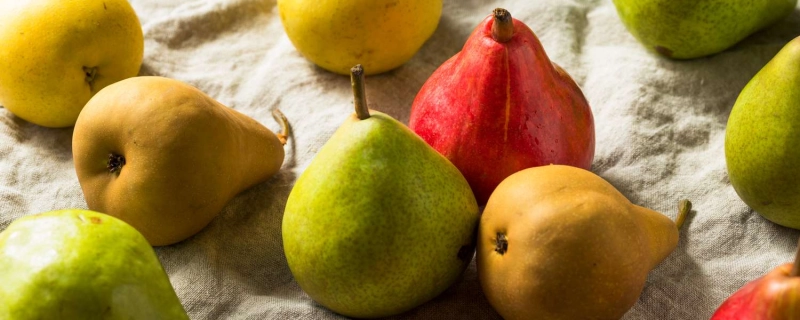
Nutritional Insights
-
Dietary Fiber:
Rich in fiber (both soluble and insoluble), supporting digestive health, cholesterol reduction, and weight management. -
Vitamin C & Antioxidants:
Moderate vitamin C content for immune support and antioxidants like flavonoids, combating oxidative stress and inflammation. -
Low-Calorie, Hydrating Fruit:
Nutrient-dense yet low-calorie, ideal for healthy eating, offering hydration, natural sweetness, and dietary fiber without excess calories. -
Potassium and Minerals:
Contains beneficial potassium, magnesium, and small amounts of calcium, essential for cardiovascular and bone health.
Expert Insights & Culinary Tips
-
Optimal Ripeness:
Pears ripen from inside out; gentle pressure near the stem indicates optimal ripeness, offering peak flavor and juiciness. -
Flavor Pairings:
Pear pairs exceptionally well with spices (cinnamon, nutmeg, ginger, cardamom), nuts (walnuts, almonds, pecans), cheeses, honey, caramel, vanilla, and wines (white, sparkling, dessert wines). -
Cooking Pears:
Bosc and Anjou pears maintain shape and texture during cooking, ideal for roasting or poaching. Bartlett pears are better for quick-cooking methods due to softer texture.
Interesting and Curious Facts
- Pears symbolize abundance, prosperity, and longevity in many cultures, notably in European and East Asian traditions.
- Historically popular in European royal courts, pears have been extensively cultivated since ancient times, appreciated for delicate flavor, elegance, and versatility.
- The oldest pear tree known, the Endicott Pear Tree in Massachusetts, was planted in 1630 and continues producing fruit today.
Harm and Dietary Considerations
-
Oral Allergy Syndrome:
Individuals with pollen allergies (particularly birch pollen) may experience mild oral discomfort or irritation after eating raw pears. -
Digestive Sensitivity:
High fiber content can occasionally cause digestive discomfort, bloating, or gas if consumed excessively, especially in sensitive individuals.
Religious Dietary Considerations
Pears are universally acceptable in major religious dietary traditions:
- Islam: Permissible (Halal).
- Judaism: Permissible (Kosher, Parve).
- Hinduism & Buddhism: Widely permissible; commonly included in religious and ceremonial offerings.
- No known restrictions in Christianity or other global religious traditions.
Final Thoughts & Sensory Journey
Pears enchant with refined sweetness, subtle aroma, and luscious, juicy textures. Versatile, nutritious, and delicately flavorful, pears elevate culinary experiences from simple snacks to gourmet delights, providing enduring appeal across global cuisines.
Resources
- McGee, H. (2004). On Food and Cooking: The Science and Lore of the Kitchen. Scribner.
- USDA FoodData Central (2023). Pears: Nutritional and Culinary Insights.
- Food and Agriculture Organization (FAO). (2021). Pear Cultivation, Varieties, and Culinary Uses.
